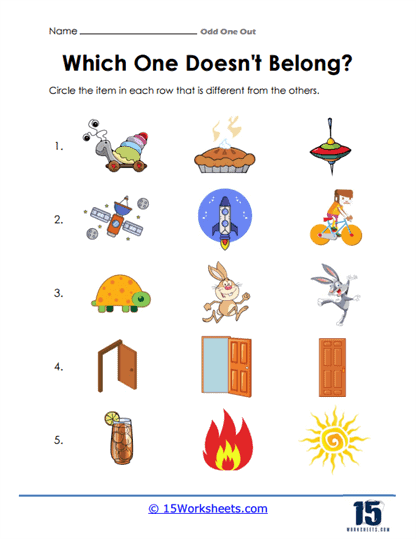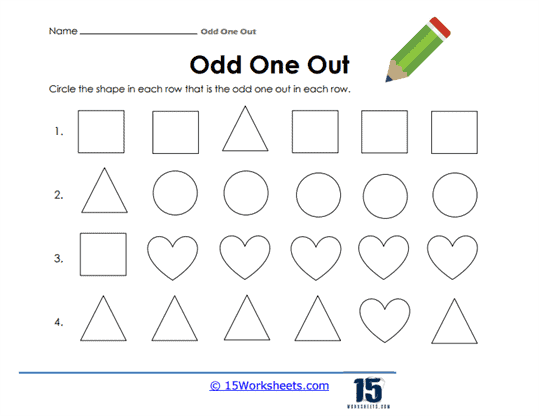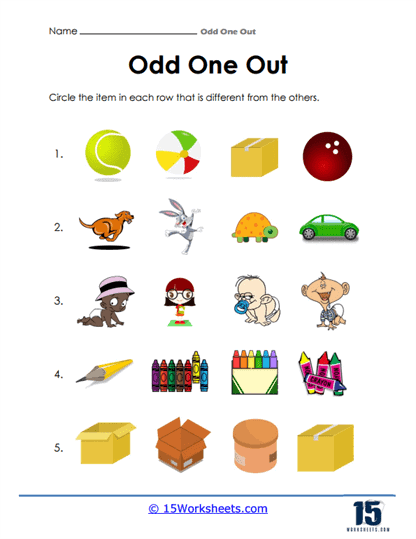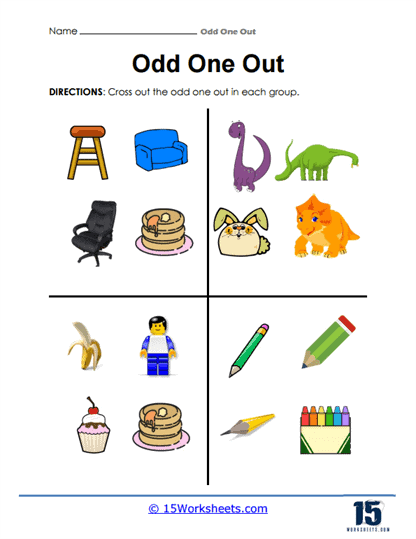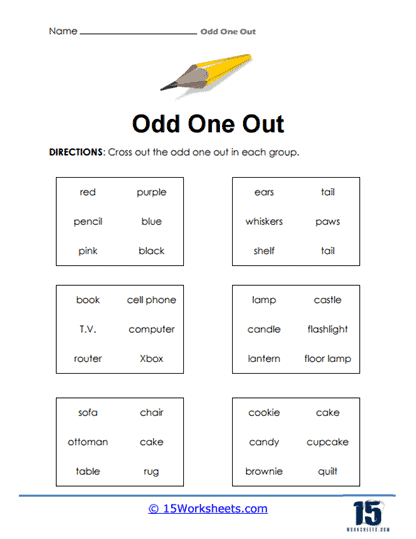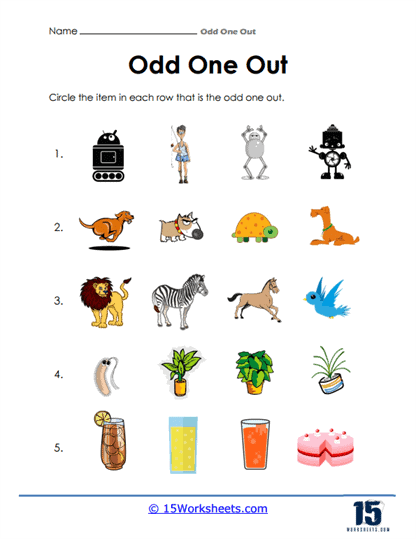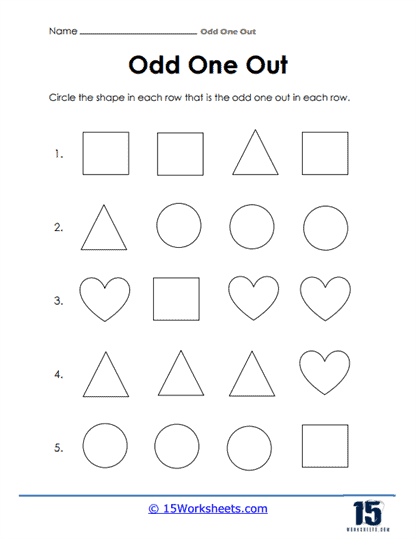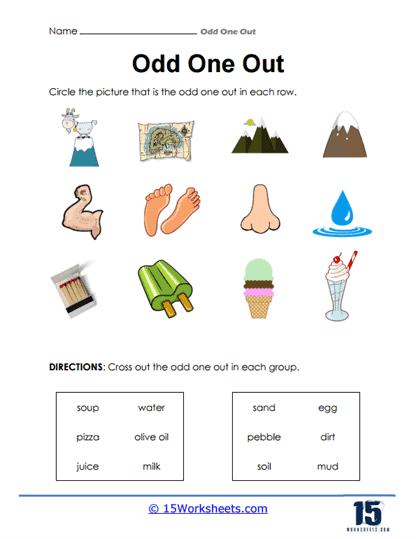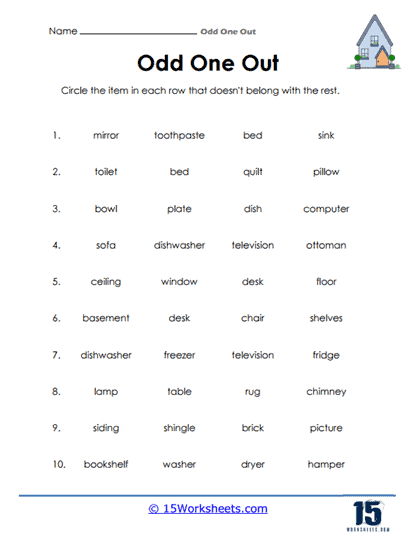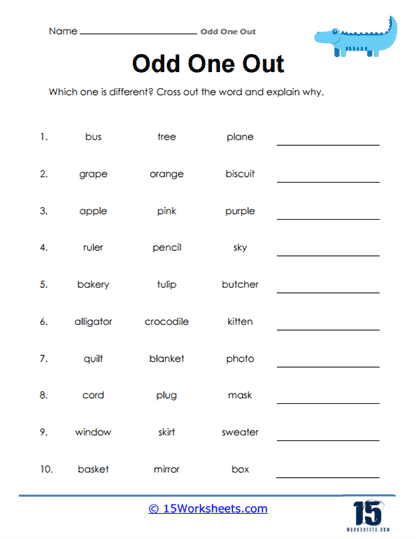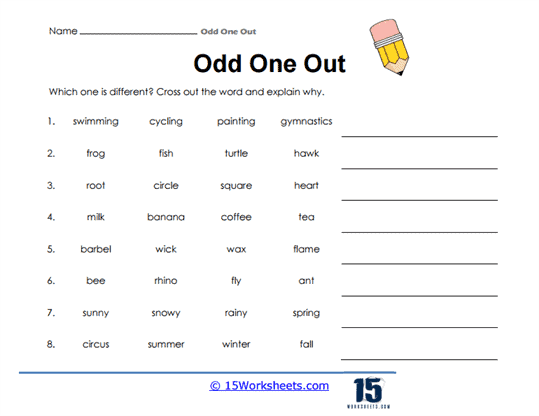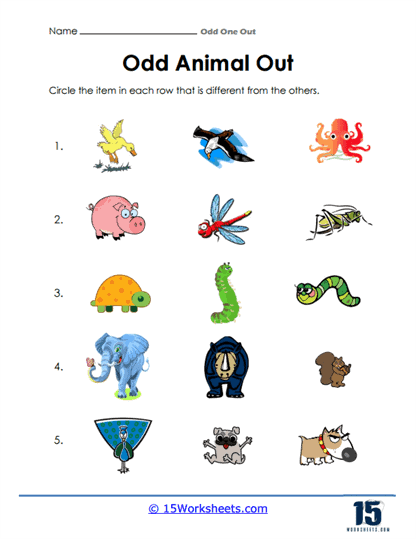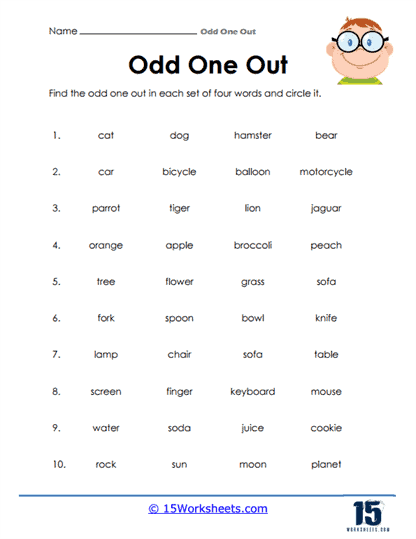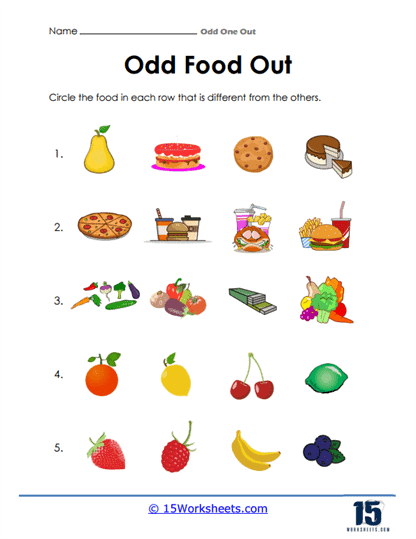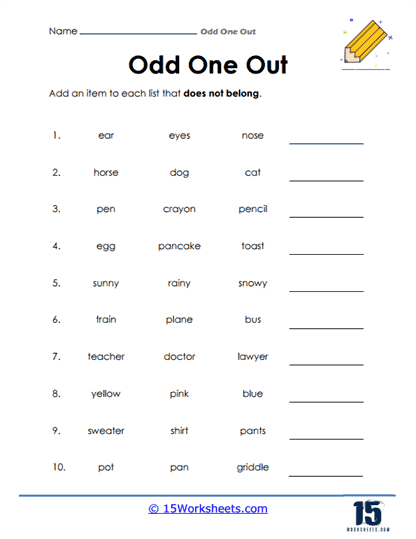Odd One Out Worksheets
All About These 15 Worksheets
Immerse young learners in the captivating world of identifying patterns and differences with this comprehensive series of Kindergarten worksheets focused on “Odd One Out.” This collection is designed to enhance critical thinking, visual perception, and problem-solving skills as students engage in activities that involve identifying the odd item among a set of objects or pictures.
Through interactive exercises, students will develop their ability to recognize patterns, analyze visual cues, and make comparisons, fostering their cognitive development and analytical reasoning. These worksheets also provide opportunities for students to practice decision-making, develop their observation skills, and strengthen their ability to identify differences and similarities. Through these worksheets, students will:
- Examine a set of objects or pictures and circle or cross out the item that does not belong based on a criterion, such as color, shape, size, or category, promoting visual discrimination and logical thinking;
- Enhance their visual perception and attention to detail;
- Sharpen their observational skills by figuring out the object that stands out after comparing it with the rest;
- And hone their categorization skills and logical thinking by adding a new word to a set of objects that can be determined as the odd one out.
Through this engaging series of Odd One Out worksheets, young learners will sharpen their critical thinking skills, enhance visual perception, and develop their ability to recognize patterns and differences. By participating in activities that involve circling or crossing out the item that does not fit a perceived common criterion, students will strengthen their observation skills, analytical reasoning, and decision-making abilities.
Overall, these worksheets provide opportunities for hands-on exploration, problem-solving, and cognitive development. By engaging with these exercises, students will develop a deeper understanding of patterns, sharpen their analytical skills, and cultivate a sense of inquiry and curiosity. Ultimately, this collection serves as a stepping stone for future learning, laying the foundation for logical thinking and problem-solving skills that will benefit students across various subject areas.
What Are Odd One Out Worksheets?
How to Spot an Odd Object in a Group
Color
The first thing you notice when you look at a series of objects may be their color. The easiest way to spot an odd object is to observe its color and determine whether there are any differences or similarities in the color it possesses compared to other objects. The color of the odd object can be a shade lighter, several shades darker, or completely unique.
Shape
If all objects share the same color, you can differentiate between them by their shapes. Observe the shape of each object; you have to truly focus on noticing any similarities or differences. The odd object may be placed differently, which may alter its shape. Compare the shape of each object with the rest, and if you find any differences, you can determine the truth by ensuring that no other object in that series shares the same shape.
Size
The last yet biggest tell-tale sign of an odd object is its size. If you have found no differences in color or shape between the odd object and the rest, it is time to evaluate its size. Check the size of each object and measure it to determine whether there are any differences between one particular object and the others in that series. The odd object can be bigger, smaller, or bear the slightest difference, but if you look closely, you’ll be able to tell.
Weight
If you’re finding an odd object in a series of objects that are not different in color, size, or shape, you can check their weight to determine the odd one. Even if an object looks like it weighs the same, you can only tell whether it’s a trick or if all objects really are the same by picking up each object or weighing them.
Benefits of Odd One Out Activities to Students
There are several benefits of activities, such as finding the odd object in a group. Let’s take a look at them.
Increased Attention Span
When you try to find the odd object in a group, you spend time and pay attention to every detail, which increases your attention span.
Improved Concentration
If you want to find the odd object without wasting too much energy or time, you have to focus. This activity allows you to eliminate all distractions and truly concentrate on the task at hand.
Memory
As you compare each object with the rest, you must retain their differences in your memory so you can find the odd object in the end. This activity exercises your memory and helps you improve your recall.
Problem Solving
Mind stimulating activities such as finding the odd object in a group enable participants to practice problem-solving and prepare their brains for making quick, well-educated predictions in real life.

